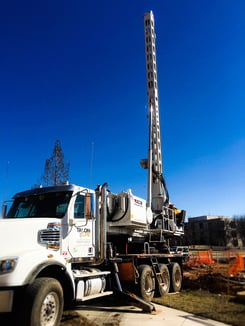Groundwater can exist at just a few feet below the surface or several hundred feet down, depending on the lithology of the subsurface and the particular location. When drilling wells, the need to isolate groundwater zones is quite common.
Casing is very common in well construction. Having four or five layers of casing and cement is not unusual, especially in oil and natural gas wells. Each casing layer performs a specific purpose in protecting the well and the surrounding layers of subsoil.
What Is Surface Casing And Its Purpose?
The surface casing is the first casing installed into a well to prevent blowouts and to minimize contamination of groundwater levels. This casing helps to protect and isolate groundwater zones.
The casing itself is a large-diameter pipe (actually a string of pipes) that extends down to a level below the groundwater table. The pipe must meet minimum pressure standards to prevent blowouts. The outside of the pipe is encased in cement. The cement keeps the pipe in a solid position while providing a layer of protection against the groundwater.
What Are The Legal Aspects Of Surface Casing?
The owner of a well has a legal obligation to protect the groundwater tables from contamination. All well

permits must meet minimum standards for surface casing to get approval. The drilling team must take certain precautions to construct the well in such a way that preserves the geologic confining layers that keeps groundwater at current depths. Any breaches must be sealed once drilling is complete.
If a drilling project does not have adequate protections for groundwater in place, and it contaminates the groundwater table, the penalties can be quite severe. The drill owner and drilling company could also be facing stiff financial penalties on top of cleanup costs.
How Is Surface Casing Installed?
Once the drilling team finishes the borehole for the well, the next step is to install the surface casing. This involves lowering the pipe, one section at a time, into the well. As a section of pipe reaches ground level, the next section of pipe is added. Centralizers are placed at a given interval on the outside of the pipe to keep the pipe centered in the borehole.
Once the pipe is in place, the drilling contractor then cements the outside of the casing into place. This involves flowing concrete around the outside of the pipe from the bottom to the top. When the concrete is in place, it is allowed to set without disturbance.
If you need assistance with drilling a well or handling environmental sampling, contact us here at Talon/LPE Drilling Services. We are an environmental drilling company working in Oklahoma, New Mexico, and Texas.

